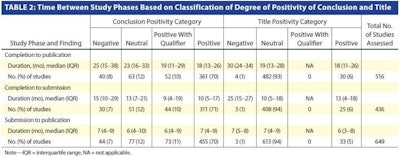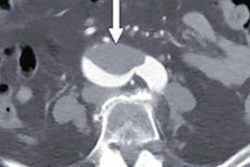
Radiology studies with positive conclusions, but not positive titles, are published faster than ones with negative conclusions, according to a new study in the American Journal of Roentgenology. This could lead to an overrepresentation of positive results in scientific literature.
Dr. Lee Treanor from the radiology department at Ottawa Hospital Civic Campus and colleagues looked at 516 imaging studies going back to 2015, noting their time from study completion to publication. The research team extracted both the conclusion and the title of each study, independently classifying positivity in duplicate. Hazard ratios were estimated using a multivariable Cox regression model to determine the strength of the associations.
The group found the average time from study completion to publication was 18 months for the 413 studies with positive conclusions. However, it was 23 months for the 63 studies with neutral conclusions, and it took 25 months for the 40 studies with negative conclusions.
When titles were scrutinized, the median time from study completion to publication was 18 months for positive titles, 19 months for studies with neutral titles, and 30 months for studies with negative titles. Treanor and colleagues concluded positive titles were not significantly associated with a shorter study publication time. The same cannot be said of positive-conclusion studies.
 Time between study phases based on degree of positivity. Note--IQR = interquartile range, NA = not applicable. Image courtesy of the American Roentgen Ray Society (ARRS) and AJR.
Time between study phases based on degree of positivity. Note--IQR = interquartile range, NA = not applicable. Image courtesy of the American Roentgen Ray Society (ARRS) and AJR.An inflated perception of test performance could adversely influence clinical decision-making and patient care, so bias-reduction strategies should "undergo trials by both journal editors and researchers in the imaging diagnostic test accuracy community," the authors concluded in a press release.


















